- Home
- Edgar Allan Poe
Landor's Cottage
Landor's Cottage Read online
Landor's Cottage
Edgar Allan Poe
Landor's Cottage
by Edgar Allan Poe
During a pedestrian trip last summer, through one or two of the river counties of New York, I found myself, as the day declined, somewhat embarrassed about the road I was pursuing. The land undulated very remarkably; and my path, for the last hour, had wound about and about so confusedly, in its effort to keep in the valleys, that I no longer knew in what direction lay the sweet village of B—, where I had determined to stop for the night. The sun had scarcely shone—strictly speaking—during the day, which nevertheless, had been unpleasantly warm. A smoky mist, resembling that of the Indian summer, enveloped all things, and of course, added to my uncertainty. Not that I cared much about the matter. If I did not hit upon the village before sunset, or even before dark, it was more than possible that a little Dutch farmhouse, or something of that kind, would soon make its appearance—although, in fact, the neighborhood (perhaps on account of being more picturesque than fertile) was very sparsely inhabited. At all events, with my knapsack for a pillow, and my hound as a sentry, a bivouac in the open air was just the thing which would have amused me. I sauntered on, therefore, quite at ease—Ponto taking charge of my gun—until at length, just as I had begun to consider whether the numerous little glades that led hither and thither, were intended to be paths at all, I was conducted by one of them into an unquestionable carriage track. There could be no mistaking it. The traces of light wheels were evident; and although the tall shrubberies and overgrown undergrowth met overhead, there was no obstruction whatever below, even to the passage of a Virginian mountain wagon—the most aspiring vehicle, I take it, of its kind. The road, however, except in being open through the wood—if wood be not too weighty a name for such an assemblage of light trees—and except in the particulars of evident wheel-tracks—bore no resemblance to any road I had before seen. The tracks of which I speak were but faintly perceptible—having been impressed upon the firm, yet pleasantly moist surface of—what looked more like green Genoese velvet than any thing else. It was grass, clearly—but grass such as we seldom see out of England —so short, so thick, so even, and so vivid in color. Not a single impediment lay in the wheel-route—not even a chip or dead twig. The stones that once obstructed the way had been carefully placed—not thrown-along the sides of the lane, so as to define its boundaries at bottom with a kind of half-precise, half-negligent, and wholly picturesque definition. Clumps of wild flowers grew everywhere, luxuriantly, in the interspaces.
What to make of all this, of course I knew not. Here was art undoubtedly—that did not surprise me—all roads, in the ordinary sense, are works of art; nor can I say that there was much to wonder at in the mere excess of art manifested; all that seemed to have been done, might have been done here—with such natural "capabilities" (as they have it in the books on Landscape Gardening)—with very little labor and expense. No; it was not the amount but the character of the art which caused me to take a seat on one of the blossomy stones and gaze up and down this fairy—like avenue for half an hour or more in bewildered admiration. One thing became more and more evident the longer I gazed: an artist, and one with a most scrupulous eye for form, had superintended all these arrangements. The greatest care had been taken to preserve a due medium between the neat and graceful on the one hand, and the pittoresque, in the true sense of the Italian term, on the other. There were few straight, and no long uninterrupted lines. The same effect of curvature or of color appeared twice, usually, but not oftener, at any one point of view. Everywhere was variety in uniformity. It was a piece of "composition," in which the most fastidiously critical taste could scarcely have suggested an emendation.
I had turned to the right as I entered this road, and now, arising, I continued in the same direction. The path was so serpentine, that at no moment could I trace its course for more than two or three paces in advance. Its character did not undergo any material change.
Presently the murmur of water fell gently upon my ear—and in a few moments afterward, as I turned with the road somewhat more abruptly than hitherto, I became aware that a building of some kind lay at the foot of a gentle declivity just before me. I could see nothing distinctly on account of the mist which occupied all the little valley below. A gentle breeze, however, now arose, as the sun was about descending; and while I remained standing on the brow of the slope, the fog gradually became dissipated into wreaths, and so floated over the scene.
As it came fully into view—thus gradually as I describe it—piece by piece, here a tree, there a glimpse of water, and here again the summit of a chimney, I could scarcely help fancying that the whole was one of the ingenious illusions sometimes exhibited under the name of "vanishing pictures."
By the time, however, that the fog had thoroughly disappeared, the sun had made its way down behind the gentle hills, and thence, as it with a slight chassez to the south, had come again fully into sight, glaring with a purplish lustre through a chasm that entered the valley from the west. Suddenly, therefore—and as if by the hand of magic—this whole valley and every thing in it became brilliantly visible.
The first coup d'oeil, as the sun slid into the position described, impressed me very much as I have been impressed, when a boy, by the concluding scene of some well-arranged theatrical spectacle or melodrama. Not even the monstrosity of color was wanting; for the sunlight came out through the chasm, tinted all orange and purple; while the vivid green of the grass in the valley was reflected more or less upon all objects from the curtain of vapor that still hung overhead, as if loth to take its total departure from a scene so enchantingly beautiful.
The little vale into which I thus peered down from under the fog canopy could not have been more than four hundred yards long; while in breadth it varied from fifty to one hundred and fifty or perhaps two hundred. It was most narrow at its northern extremity, opening out as it tended southwardly, but with no very precise regularity. The widest portion was within eighty yards of the southern extreme. The slopes which encompassed the vale could not fairly be called hills, unless at their northern face. Here a precipitous ledge of granite arose to a height of some ninety feet; and, as I have mentioned, the valley at this point was not more than fifty feet wide; but as the visiter proceeded southwardly from the cliff, he found on his right hand and on his left, declivities at once less high, less precipitous, and less rocky. All, in a word, sloped and softened to the south; and yet the whole vale was engirdled by eminences, more or less high, except at two points. One of these I have already spoken of. It lay considerably to the north of west, and was where the setting sun made its way, as I have before described, into the amphitheatre, through a cleanly cut natural cleft in the granite embankment; this fissure might have been ten yards wide at its widest point, so far as the eye could trace it. It seemed to lead up, up like a natural causeway, into the recesses of unexplored mountains and forests. The other opening was directly at the southern end of the vale. Here, generally, the slopes were nothing more than gentle inclinations, extending from east to west about one hundred and fifty yards. In the middle of this extent was a depression, level with the ordinary floor of the valley. As regards vegetation, as well as in respect to every thing else, the scene softened and sloped to the south. To the north—on the craggy precipice—a few paces from the verge—up sprang the magnificent trunks of numerous hickories, black walnuts, and chestnuts, interspersed with occasional oak, and the strong lateral branches thrown out by the walnuts especially, spread far over the edge of the cliff. Proceeding southwardly, the explorer saw, at first, the same class of trees, but less and less lofty and Salvatorish in character; then he saw the gentler elm, succeeded by the sassafras and locust—these again by the sof
ter linden, red-bud, catalpa, and maple—these yet again by still more graceful and more modest varieties. The whole face of the southern declivity was covered with wild shrubbery alone—an occasional silver willow or white poplar excepted. In the bottom of the valley itself—(for it must be borne in mind that the vegetation hitherto mentioned grew only on the cliffs or hillsides)—were to be seen three insulated trees. One was an elm of fine size and exquisite form: it stood guard over the southern gate of the vale. Another was a hickory, much larger than the elm, and altogether a much finer tree, although both were exceedingly beautiful: it seemed to have taken charge of the northwestern entrance, springing from a group of rocks in the very jaws of the ravine, and throwing its graceful body, at an angle of nearly forty-five degrees, far out into the sunshine of the amphitheatre. About thirty yards east of this tree stood, however, the pride of the valley, and beyond all question the most magnificent tree I have ever seen, unless, perhaps, among the cypresses of the Itchiatuckanee. It was a triple—stemmed tulip-tree—the Liriodendron Tulipiferum—one of the natural order of magnolias. Its three trunks separated from the parent at about three feet from the soil, and diverging very slightly and gradually, were not more than four feet apart at the point where the largest stem shot out into foliage: this was at an elevation of about eighty feet. The whole height of the principal division was one hundred and twenty feet. Nothing can surpass in beauty the form, or the glossy, vivid green of the leaves of the tulip-tree. In the present instance they were fully eight inches wide; but their glory was altogether eclipsed by the gorgeous splendor of the profuse blossoms. Conceive, closely congregated, a million of the largest and most resplendent tulips! Only thus can the reader get any idea of the picture I would convey. And then the stately grace of the clean, delicately—granulated columnar stems, the largest four feet in diameter, at twenty from the ground. The innumerable blossoms, mingling with those of other trees scarcely less beautiful, although infinitely less majestic, filled the valley with more than Arabian perfumes.
The general floor of the amphitheatre was grass of the same character as that I had found in the road; if anything, more deliciously soft, thick, velvety, and miraculously green. It was hard to conceive how all this beauty had been attained.
I have spoken of two openings into the vale. From the one to the northwest issued a rivulet, which came, gently murmuring and slightly foaming, down the ravine, until it dashed against the group of rocks out of which sprang the insulated hickory. Here, after encircling the tree, it passed on a little to the north of east, leaving the tulip tree some twenty feet to the south, and making no decided alteration in its course until it came near the midway between the eastern and western boundaries of the valley. At this point, after a series of sweeps, it turned off at right angles and pursued a generally southern direction meandering as it went—until it became lost in a small lake of irregular figure (although roughly oval), that lay gleaming near the lower extremity of the vale. This lakelet was, perhaps, a hundred yards in diameter at its widest part. No crystal could be clearer than its waters. Its bottom, which could be distinctly seen, consisted altogether, of pebbles brilliantly white. Its banks, of the emerald grass already described, rounded, rather than sloped, off into the clear heaven below; and so clear was this heaven, so perfectly, at times, did it reflect all objects above it, that where the true bank ended and where the mimic one commenced, it was a point of no little difficulty to determine. The trout, and some other varieties of fish, with which this pond seemed to be almost inconveniently crowded, had all the appearance of veritable flying-fish. It was almost impossible to believe that they were not absolutely suspended in the air. A light birch canoe that lay placidly on the water, was reflected in its minutest fibres with a fidelity unsurpassed by the most exquisitely polished mirror. A small island, fairly laughing with flowers in full bloom, and affording little more space than just enough for a picturesque little building, seemingly a fowl-house—arose from the lake not far from its northern shore—to which it was connected by means of an inconceivably light—looking and yet very primitive bridge. It was formed of a single, broad and thick plank of the tulip wood. This was forty feet long, and spanned the interval between shore and shore with a slight but very perceptible arch, preventing all oscillation. From the southern extreme of the lake issued a continuation of the rivulet, which, after meandering for, perhaps, thirty yards, finally passed through the "depression" (already described) in the middle of the southern declivity, and tumbling down a sheer precipice of a hundred feet, made its devious and unnoticed way to the Hudson.
The lake was deep—at some points thirty feet—but the rivulet seldom exceeded three, while its greatest width was about eight. Its bottom and banks were as those of the pond—if a defect could have been attributed, in point of picturesqueness, it was that of excessive neatness.
The expanse of the green turf was relieved, here and there, by an occasional showy shrub, such as the hydrangea, or the common snowball, or the aromatic seringa; or, more frequently, by a clump of geraniums blossoming gorgeously in great varieties. These latter grew in pots which were carefully buried in the soil, so as to give the plants the appearance of being indigenous. Besides all this, the lawn's velvet was exquisitely spotted with sheep—a considerable flock of which roamed about the vale, in company with three tamed deer, and a vast number of brilliantly—plumed ducks. A very large mastiff seemed to be in vigilant attendance upon these animals, each and all.
Along the eastern and western cliffs—where, toward the upper portion of the amphitheatre, the boundaries were more or less precipitous—grew ivy in great profusion—so that only here and there could even a glimpse of the naked rock be obtained. The northern precipice, in like manner, was almost entirely clothed by grape-vines of rare luxuriance; some springing from the soil at the base of the cliff, and others from ledges on its face.
The slight elevation which formed the lower boundary of this little domain, was crowned by a neat stone wall, of sufficient height to prevent the escape of the deer. Nothing of the fence kind was observable elsewhere; for nowhere else was an artificial enclosure needed:—any stray sheep, for example, which should attempt to make its way out of the vale by means of the ravine, would find its progress arrested, after a few yards' advance, by the precipitous ledge of rock over which tumbled the cascade that had arrested my attention as I first drew near the domain. In short, the only ingress or egress was through a gate occupying a rocky pass in the road, a few paces below the point at which I stopped to reconnoitre the scene.
I have described the brook as meandering very irregularly through the whole of its course. Its two general directions, as I have said, were first from west to east, and then from north to south. At the turn, the stream, sweeping backward, made an almost circular loop, so as to form a peninsula which was very nearly an island, and which included about the sixteenth of an acre. On this peninsula stood a dwelling-house—and when I say that this house, like the infernal terrace seen by Vathek, "etait d'une architecture inconnue dans les annales de la terre," I mean, merely, that its tout ensemble struck me with the keenest sense of combined novelty and propriety—in a word, of poetry—(for, than in the words just employed, I could scarcely give, of poetry in the abstract, a more rigorous definition)—and I do not mean that merely outre was perceptible in any respect.
In fact nothing could well be more simple—more utterly unpretending than this cottage. Its marvellous effect lay altogether in its artistic arrangement as a picture. I could have fancied, while I looked at it, that some eminent landscape-painter had built it with his brush.
The point of view from which I first saw the valley, was not altogether, although it was nearly, the best point from which to survey the house. I will therefore describe it as I afterwards saw it—from a position on the stone wall at the southern extreme of the amphitheatre.
The main building was about twenty-four feet long and sixteen broad—certainly not more. Its total height, from the ground
to the apex of the roof, could not have exceeded eighteen feet. To the west end of this structure was attached one about a third smaller in all its proportions:—the line of its front standing back about two yards from that of the larger house, and the line of its roof, of course, being considerably depressed below that of the roof adjoining. At right angles to these buildings, and from the rear of the main one—not exactly in the middle—extended a third compartment, very small—being, in general, one-third less than the western wing. The roofs of the two larger were very steep—sweeping down from the ridge-beam with a long concave curve, and extending at least four feet beyond the walls in front, so as to form the roofs of two piazzas. These latter roofs, of course, needed no support; but as they had the air of needing it, slight and perfectly plain pillars were inserted at the corners alone. The roof of the northern wing was merely an extension of a portion of the main roof. Between the chief building and western wing arose a very tall and rather slender square chimney of hard Dutch bricks, alternately black and red:—a slight cornice of projecting bricks at the top. Over the gables the roofs also projected very much:—in the main building about four feet to the east and two to the west. The principal door was not exactly in the main division, being a little to the east—while the two windows were to the west. These latter did not extend to the floor, but were much longer and narrower than usual—they had single shutters like doors—the panes were of lozenge form, but quite large. The door itself had its upper half of glass, also in lozenge panes—a movable shutter secured it at night. The door to the west wing was in its gable, and quite simple—a single window looked out to the south. There was no external door to the north wing, and it also had only one window to the east.
The blank wall of the eastern gable was relieved by stairs (with a balustrade) running diagonally across it—the ascent being from the south. Under cover of the widely projecting eave these steps gave access to a door leading to the garret, or rather loft—for it was lighted only by a single window to the north, and seemed to have been intended as a store-room.

 The Works of Edgar Allan Poe — Volume 2
The Works of Edgar Allan Poe — Volume 2 The Works of Edgar Allan Poe — Volume 1
The Works of Edgar Allan Poe — Volume 1 The Works of Edgar Allan Poe — Volume 3
The Works of Edgar Allan Poe — Volume 3 The Works of Edgar Allan Poe — Volume 5
The Works of Edgar Allan Poe — Volume 5 The Works of Edgar Allan Poe — Volume 4
The Works of Edgar Allan Poe — Volume 4 The Tell-Tale Heart
The Tell-Tale Heart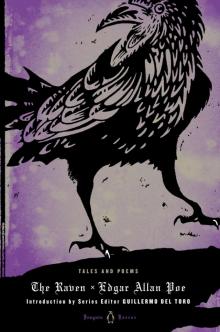 The Raven (Penguin)
The Raven (Penguin) The Paris Mysteries
The Paris Mysteries Tales of Terror from Edgar Allan Poe
Tales of Terror from Edgar Allan Poe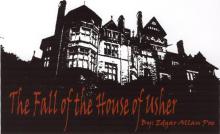 The Fall of the House of Usher
The Fall of the House of Usher The Golden Book of World's Greatest Mysteries
The Golden Book of World's Greatest Mysteries The Narrative of Arthur Gordon Pym of Nantucket
The Narrative of Arthur Gordon Pym of Nantucket Ligeia
Ligeia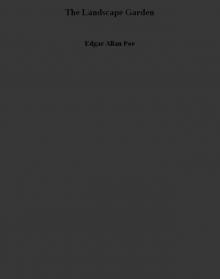 The Landscape Garden
The Landscape Garden Complete Tales & Poems
Complete Tales & Poems Great Tales and Poems of Edgar Allan Poe
Great Tales and Poems of Edgar Allan Poe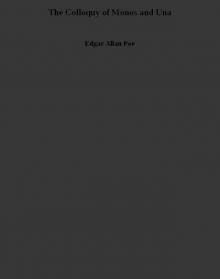 The Colloquy of Monos and Una
The Colloquy of Monos and Una The Oblong Box
The Oblong Box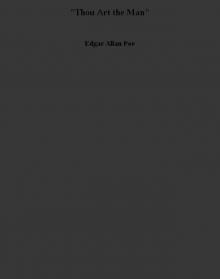 Thou Art the Man
Thou Art the Man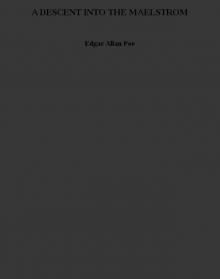 A DESCENT INTO THE MAELSTROM
A DESCENT INTO THE MAELSTROM THE MURDERS IN THE RUE MORGUE
THE MURDERS IN THE RUE MORGUE The Business Man
The Business Man The Mystery of Marie Rogêt
The Mystery of Marie Rogêt Metzengerstein
Metzengerstein The Man That Was Used Up
The Man That Was Used Up William Wilson
William Wilson The Philosophy of Composition
The Philosophy of Composition The Portable Edgar Allan Poe
The Portable Edgar Allan Poe Bon-Bon
Bon-Bon A Predicament
A Predicament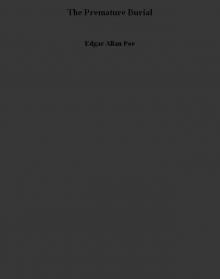 The Premature Burial
The Premature Burial The Angel of the Odd
The Angel of the Odd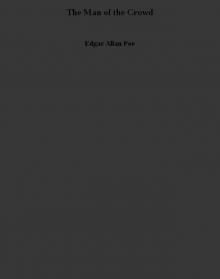 The Man of the Crowd
The Man of the Crowd Never Bet the Devil Your Head
Never Bet the Devil Your Head The Tell-Tale Heart and Other Writings
The Tell-Tale Heart and Other Writings The System of Doctor Tarr and Professor Fether
The System of Doctor Tarr and Professor Fether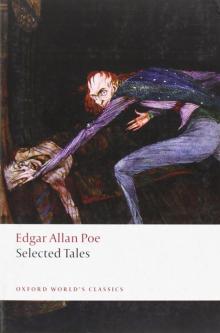 Selected Tales (Oxford World's Classics)
Selected Tales (Oxford World's Classics) Essential Tales and Poems of Edgar Allan Poe (Barnes & Noble Classics Series)
Essential Tales and Poems of Edgar Allan Poe (Barnes & Noble Classics Series) MS. Found in a Bottle
MS. Found in a Bottle Some Words with a Mummy
Some Words with a Mummy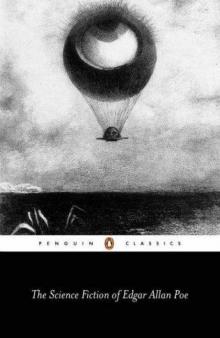 The Science Fiction of Edgar Allan Poe (Penguin Classics)
The Science Fiction of Edgar Allan Poe (Penguin Classics) King Pest
King Pest CRITICISM
CRITICISM How to Write a Blackwood Article
How to Write a Blackwood Article Mystification
Mystification Diddling Considered as One of the Exact Sciences
Diddling Considered as One of the Exact Sciences Steampunk Poe
Steampunk Poe The Literary Life of Thingum Bob, Esq.
The Literary Life of Thingum Bob, Esq. Classic Crime Collection
Classic Crime Collection Complete Stories and Poems of Edgar Allen Poe
Complete Stories and Poems of Edgar Allen Poe Berenice
Berenice The Black Cat
The Black Cat The Slender Poe Anthology
The Slender Poe Anthology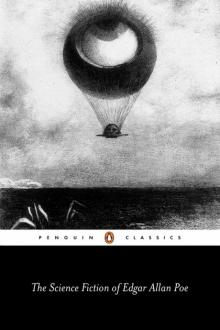 The Science Fiction of Edgar Allan Poe
The Science Fiction of Edgar Allan Poe The Assignation
The Assignation The Thousand-and-Second Tale of Scheherazade
The Thousand-and-Second Tale of Scheherazade The Raven and Other Short Stories
The Raven and Other Short Stories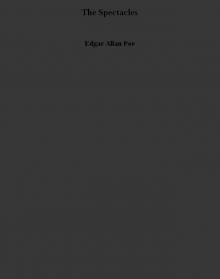 The Spectacles
The Spectacles Hop-Frog
Hop-Frog The Purloined Letter
The Purloined Letter Mellonta Tauta
Mellonta Tauta The Balloon-Hoax
The Balloon-Hoax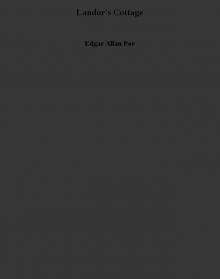 Landor's Cottage
Landor's Cottage Mesmeric Revelation
Mesmeric Revelation The Pit and the Pendulum
The Pit and the Pendulum